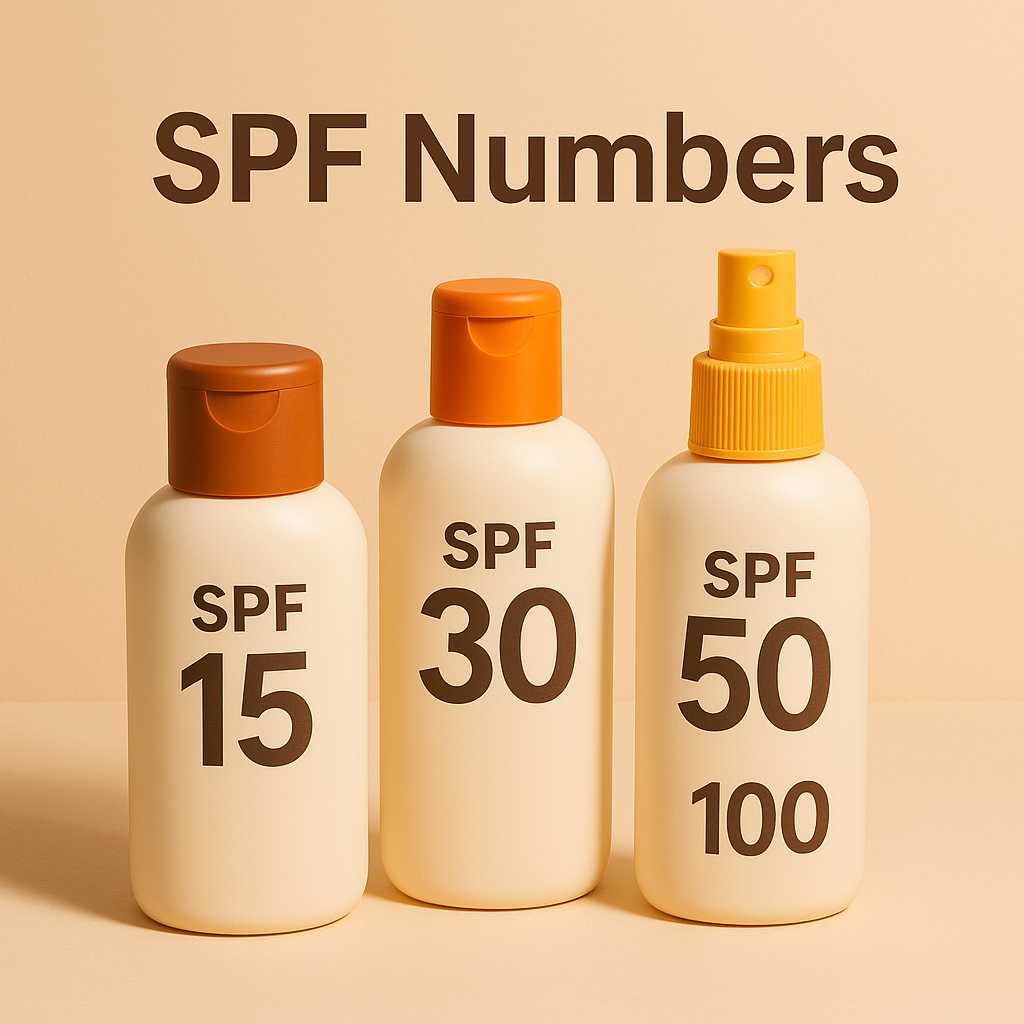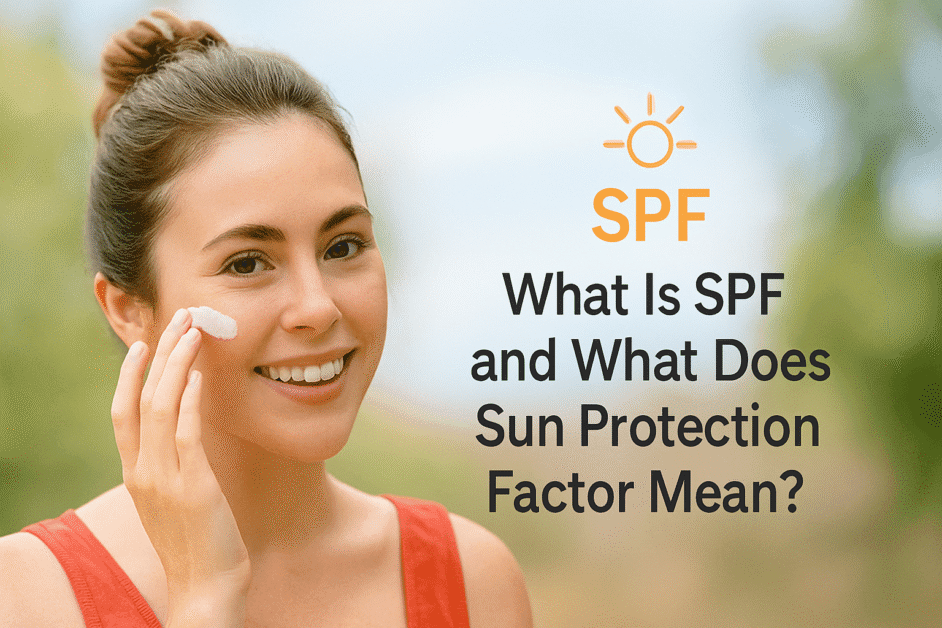SPF, or sun protection factor, is a measure of how effectively a sunscreen protects the skin from harmful UV radiation. Sunscreen is a vital component of any skin care routine, as it helps shield the skin from the sun’s damaging rays, reducing the risk of sunburn, premature ageing, and skin cancer. Understanding how to apply sunscreen correctly is the key to maximising its effectiveness. Sun protection products come in various forms, including lotions, sprays, and creams, catering to different preferences and skin types. While sunscreen can help prevent tanning to some extent, it’s essential to reapply regularly, especially after swimming or sweating.
There are different types of sunscreens available, including physical and chemical formulations, each offering unique benefits and considerations. Incorporating sunscreen into your skincare regimen provides numerous benefits, including protection against sun damage, maintaining skin health, and preserving a youthful appearance. It’s an essential component of face care products and overall sun protection strategies. In this article, we’ll deeply understand the meaning of SPF and all about sun protection.
What Does SPF Mean?
SPF stands for “Sun Protection Factor”. It’s a measure of how well a sunscreen can protect your skin from the sun’s ultraviolet (UV) radiation. The SPF number indicates the fraction of the sun’s UV radiation that reaches the skin. For example, if you’re wearing sunscreen with an SPF of 30, it means that 1/30th of the sun’s burning radiation will reach your skin.
In other words, SPF is a rating system that tells you how long you can stay in the sun before your skin starts to burn, compared to how long you can stay in the sun without any sun protection at all. So, if your unprotected skin would start to burn after 10 minutes, a sunscreen with an SPF of 30 would allow you to stay in the sun for 30 times longer, or 300 minutes, before burning.
What Does SPF Numbers Mean?

SPF, or Sun Protection Factor, is a numerical rating that indicates the level of protection a sunscreen offers against the sun’s UVB rays. The SPF number represents the amount of time it takes for skin to burn when wearing sunscreen compared to when not wearing sunscreen. For example, SPF 30 means it would take 30 times longer for the skin to burn with the sunscreen than without it. Higher SPF numbers provide greater protection, but it’s essential to note that no sunscreen can offer 100% protection. It’s crucial to reapply sunscreen regularly, especially after swimming or sweating, to maintain effectiveness. Understanding what SPF numbers mean helps consumers choose the appropriate level of protection for their skin and sun exposure needs. The SPF number is directly related to the level of protection the sunscreen provides. Here’s a breakdown of what the different SPF numbers mean:
| SPF Rating | UV Protection Level |
| SPF 15 | Blocks 93% of UVB rays |
| SPF 30 | Blocks 97% of UVB rays |
| SPF 50 | Blocks 98% of UVB rays |
| SPF 100 | Blocks 99% of UVB rays |
It’s important to note that SPF only measures protection against UVB rays, which are the rays that cause sunburns. To ensure full-spectrum protection, you’ll also want to look for a sunscreen that offers protection against UVA rays, which can cause long-term skin damage and premature ageing.
What Is SPF In Sunscreen?
SPF is a crucial component of any sunscreen, as it determines how effectively the product can shield your skin from the sun’s harmful UV radiation. Sunscreens with higher SPF values provide more protection, but it’s not as simple as “the higher, the better”. SPF 30 is generally considered the minimum level of protection that’s recommended for daily use, as it blocks 97% of UVB rays. However, many dermatologists and skincare experts suggest opting for an SPF of 50 or higher, as it provides an extra layer of protection and helps ensure you’re getting the full benefit of the sunscreen. It’s important to remember that no sunscreen can provide 100% protection, so it’s crucial to reapply it regularly, seek shade, and wear protective clothing when spending extended periods in the sun.
How Does SPF Work?
The SPF number is a measure of how much solar energy (in the form of UVB rays) is required to produce a sunburn on protected skin (with sunscreen) versus unprotected skin. Here’s a more detailed explanation of how SPF works:
- Absorption: Sunscreens contain active ingredients that absorb, reflect, or scatter UV radiation, preventing it from penetrating the skin.
- Reflection: Some sunscreen ingredients, like zinc oxide and titanium dioxide, work by reflecting and scattering UV rays away from the skin.
- Absorption: Other ingredients, like avobenzone and oxybenzone, absorb UV radiation and convert it into heat, which is then released from the skin.
How to Choose the Right SPF for Your Skin
Choosing the right SPF for your skin can be tricky, but it’s essential to protect your skin from harmful UV rays. The Sun Protection Factor (SPF) indicates how long sunscreen will protect your skin from UVB rays, which cause sunburn and contribute to skin cancer. Here’s how to pick the right SPF for your needs:
1. Know Your Skin Type
Your skin type significantly influences the SPF you need. Fair or light skin burns more easily and requires a higher SPF (30-50), while darker skin tones can use SPF 15-30. Oily and acne-prone skin may benefit from non-comedogenic, gel-based sunscreens with SPF 30.
2. Consider Your Daily Activities
If you’re mostly indoors, an SPF of 15-30 is usually sufficient. However, for outdoor activities or prolonged sun exposure, opt for SPF 50 or higher to ensure maximum protection.
3. Choose Broad-Spectrum Protection
Always pick a sunscreen that offers broad-spectrum protection against both UVA and UVB rays. UVA rays cause premature ageing, while UVB rays lead to sunburn.
4. Factor in Your Climate
Hot and humid climates might call for water-resistant, sweat-proof sunscreens with at least SPF 50. In colder or less sunny environments, SPF 15-30 may suffice.
5. Check Your Skin Concerns
Sensitive or acne-prone skin types should look for sunscreens labeled “fragrance-free,” “non-comedogenic,” and “hypoallergenic.” Those with pigmentation issues should consider SPF 50+ to prevent dark spots and uneven skin tone.
How To Apply SPF?
Applying sunscreen correctly is essential to ensure you get the full protection it offers. Here are six key tips for applying SPF effectively:
- Use the Right Amount: The standard recommendation is to apply about 1 ounce (or a shot glass full) of sunscreen to your entire body.
- Apply Evenly: Make sure to cover all exposed areas of your skin, including often-missed spots like the lips, ears, around the eyes, and the scalp (if you have thin or no hair).
- Reapply Frequently: Reapply sunscreen every 2 hours, or more often if you’re swimming or sweating.
- Don’t Skimp: Use a generous amount of sunscreen and make sure to cover all exposed areas of your skin.
- Apply Before Sun Exposure: Apply sunscreen 15-30 minutes before going outside to allow the ingredients to fully absorb into your skin.
- Combine with Other Sun Protection: Wear protective clothing, seek shade, and avoid peak sun hours to maximise your sun protection.
Common Myths About SPF
There are many misconceptions about SPF and sunscreen, leading to improper sun protection and skin damage. Let’s bust some of the most common myths about SPF to help you make informed choices!
1. Higher SPF Means Full Protection
Many believe that SPF 100 offers double the protection of SPF 50, but that’s not true. SPF 50 blocks about 98% of UVB rays, while SPF 100 blocks 99%. No sunscreen offers 100% protection, so reapplication every two hours is crucial.
2. Dark Skin Doesn’t Need Sunscreen
People with darker skin tones often think they are naturally protected from sun damage. While melanin does offer some protection, it’s not enough to prevent UV damage or skin cancer. Everyone, regardless of skin tone, needs sunscreen.
3. Sunscreen Is Only Necessary on Sunny Days
UV rays can penetrate through clouds and windows, causing skin damage even on overcast days. It’s essential to wear sunscreen daily, whether it’s sunny, cloudy, or even indoors.
4. Makeup with SPF Is Enough
Many think their makeup with SPF is sufficient, but the amount applied is often too little to provide adequate protection. Layering a separate broad-spectrum sunscreen underneath makeup ensures complete coverage.
5. One Application Lasts All Day
Sunscreen effectiveness decreases over time due to sweat, swimming, or natural wear-off. To stay protected, reapply every two hours, especially after swimming or sweating.
Conclusion
Understanding SPF and how it works is essential for anyone who wants to protect their skin from the sun’s damaging UV rays. Whether you’re spending a day at the beach, working in the garden, or simply running errands, incorporating a high-quality sunscreen with an appropriate SPF into your skincare routine can make a significant difference in your skin’s health and appearance.
FAQs on Sun Protection Factor (SPF)
Both SPF 30 and SPF 50 provide excellent protection, but SPF 50 offers a slightly higher level of UVB protection. SPF 30 blocks 97% of UVB rays, while SPF 50 blocks 98%. For optimal protection, many dermatologists recommend using a sunscreen with an SPF of 50 or higher.
The “PA” rating on sunscreens refers to the level of protection against UVA rays, which can cause long-term skin damage and premature ageing. The more “+” symbols, the higher the UVA protection. An SPF 50 PA++++ sunscreen provides very high UVA protection in addition to the high UVB protection of the SPF 50 rating.
For daily use, the American Academy of Dermatology recommends using a sunscreen with an SPF of at least 30. However, many experts suggest using an SPF of 50 or higher for optimal protection, especially when spending extended periods in the sun.
When it comes to the face, it’s generally recommended to use a sunscreen with an SPF of 30 or higher. The skin on the face is often more delicate and prone to sun damage, so a higher SPF can provide better protection. Look for a facial sunscreen that is non-comedogenic (won’t clog pores) and formulated for your specific skin type.
The SPF rating is determined through a standardised test that measures the amount of time it takes for skin to burn when using sunscreen, compared to the amount of time it takes for unprotected skin to burn.
When choosing an SPF, consider the following factors:
– Skin type: Those with fair skin may need a higher SPF than those with darker skin tones.
– Sun exposure: If you’ll be spending a lot of time outdoors, choose a higher SPF.
– Activity level: If you’ll be sweating or swimming, opt for a higher SPF that is water-resistant.
– Overall sun protection: Use sunscreen in conjunction with other sun-safe practices like seeking shade and wearing protective clothing.
The highest SPF currently available in the market is SPF 100. However, experts generally agree that SPF values above 50 only provide a marginal increase in protection, and that an SPF of 30-50 is sufficient for most everyday use.



